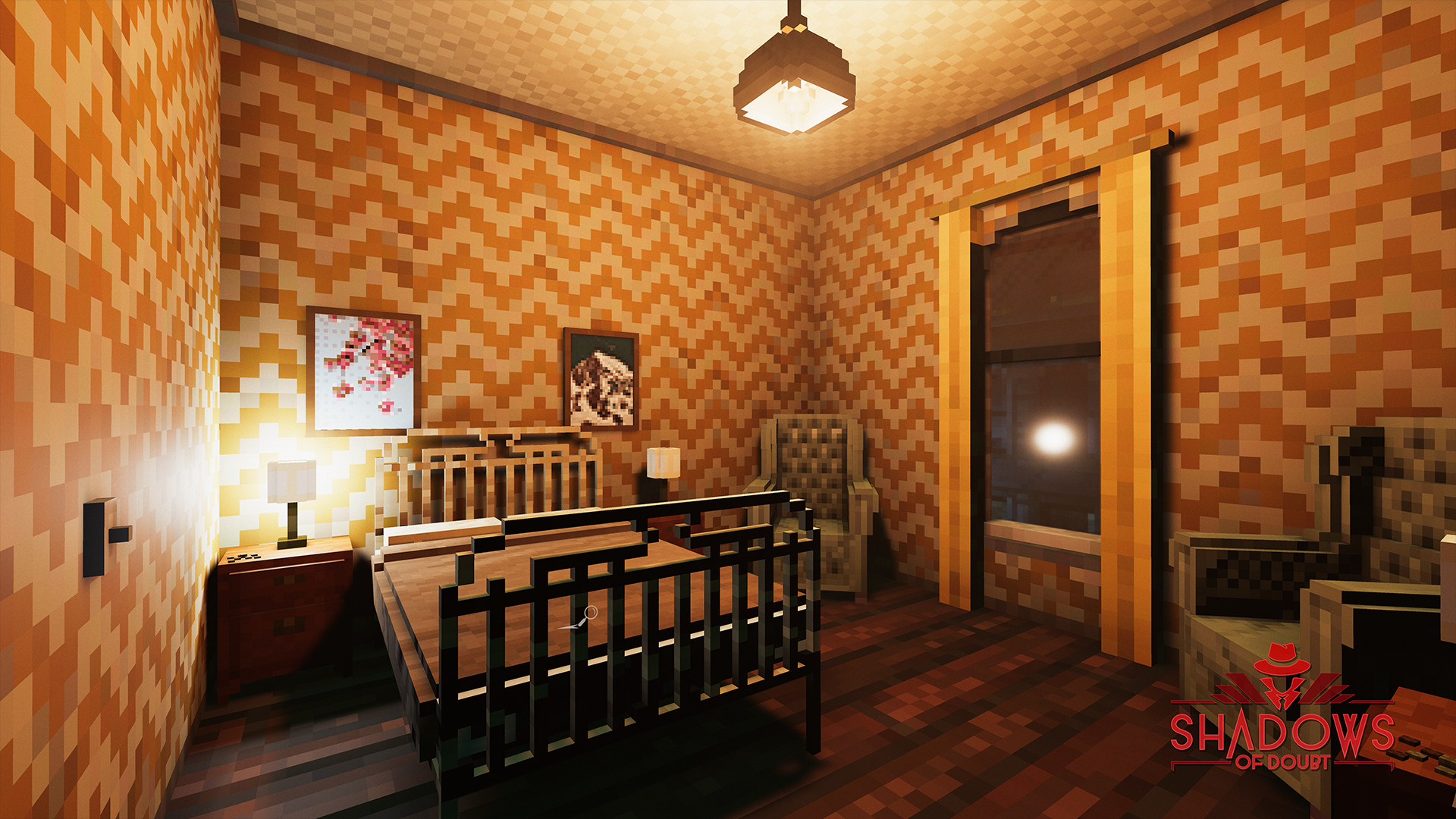Closed Alpha Sign-up!
Hello everyone, I’m very pleased and excited to announce we are launching a Closed Alpha for a lucky number of participants! The game is coming together now, but we’d really like some feedback on where we’re heading with the game, so we’ve come to you. If you’re interested in getting involved, keep reading…
The time has finally come for you to get your feet wet and investigate some sci-fi noir detective goodness yourselves. The Shadows of Doubt Closed Alpha has been announced and recruitment is happening RIGHT HERE, RIGHT NOW:
Closed Alpha Sign-Up - Discord

The test will run through the second half of May and we will be looking for your general feedback on the experience and how you are getting along. Suggestions, likes, dislikes and all the in between are welcome! Testers will have access to a special Discord channel to discuss their investigative findings and thoughts.
Here's a little taste of things to expect within your Alpha experience if chosen:
As this alpha is purely for gathering feedback, we’ll ask you not to share it online at this point. We’ll get to that point in the future, but for now, we’re just looking to shape the game into being the best it can be!
This is a very exciting and important step for Shadows of Doubt and we are really looking forward to hearing from you. Make sure to not miss this opportunity and get involved over at the Discord now:
[h3]Closed Alpha Sign-Up - Discord[/h3]
[h3]This is one case you don’t want to let go cold! 🔎
[/h3]
The time has finally come for you to get your feet wet and investigate some sci-fi noir detective goodness yourselves. The Shadows of Doubt Closed Alpha has been announced and recruitment is happening RIGHT HERE, RIGHT NOW:
Closed Alpha Sign-Up - Discord

The test will run through the second half of May and we will be looking for your general feedback on the experience and how you are getting along. Suggestions, likes, dislikes and all the in between are welcome! Testers will have access to a special Discord channel to discuss their investigative findings and thoughts.
Here's a little taste of things to expect within your Alpha experience if chosen:
-
Nearly an hour of Sci-Fi Noir, mystery filled story gameplay.
A hand-crafted, robust neon city full of living, breathing citizens.
Two polished and complete side missions to show the procedural aspect of the gameplay.
Use your sleuthing skills as a detective by: monitoring security systems, hacking computers, lock-picking doors and much, much more.
Utilise an arsenal of investigative technology and equipment will be at your disposal including codebreakers, fingerprint scanners and more.
As this alpha is purely for gathering feedback, we’ll ask you not to share it online at this point. We’ll get to that point in the future, but for now, we’re just looking to shape the game into being the best it can be!
This is a very exciting and important step for Shadows of Doubt and we are really looking forward to hearing from you. Make sure to not miss this opportunity and get involved over at the Discord now:
[h3]Closed Alpha Sign-Up - Discord[/h3]
[h3]This is one case you don’t want to let go cold! 🔎
[/h3]
 Hack computers to access CCTV records.
Hack computers to access CCTV records. The fingerprint system and fingerprint reader is one of the most significant gameplay additions.
The fingerprint system and fingerprint reader is one of the most significant gameplay additions. The diner is one of many new locations added this year.
The diner is one of many new locations added this year.
 We’re going all out on awesome-looking rain!
We’re going all out on awesome-looking rain!








